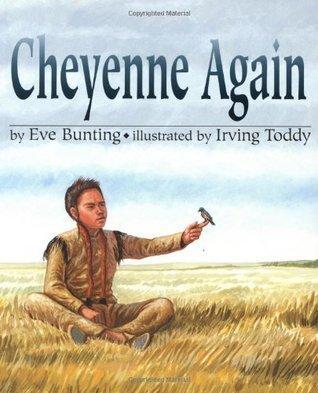
Cheyenne Again
Read Aloud Book: Cheyenne Again
Story: Eve Bunting
Illustration: Irving Toddy
ISBN-13: 978-0547531762
C3 Framework Key term: Cultural preference: A choice grounded in cultural habits or deeply-held cultural beliefs about appropriate behavior in certain settings or situations.
Handouts
Code Talkers Worksheet (PDF version only)
Download and Print the PDF
Synopsis
Young Bull is forced to leave his reservation and attend a boarding school. He needs to change his hair and dress style, language, and religion. He studies US history from the perspective of white men. He has to adapt but never forgets his Indian identity. Note: Consider showing the documentary, Unspoken: America's Native American Boarding Schools (57m).
Discussion
Say: Beginning in the late nineteenth century, American Indian children were required to attend government- or church-operated boarding schools. Native American children were forbidden to speak their Native languages and practice their religion. Ask: What was the purpose of boarding schools? Say: State governments rationalized it as an opportunity for Native Americans to have more economical opportunities within the larger, dominant society. Children learned the life skills and vocational skills to assimilate into American society. Ask: Why did states build boarding schools and not just day schools? Say: Some public officials advocated for taking Native American children from their tribes at an early age and let them to reunite with their families when they are young adults. To prevent children from running away, starting in 1879, some of the schools were built off reservations. In some cases, schools were deliberately constructed at a great geographical distance to discourage children from returning home in the summer. By minimizing contact with their tribes, public officials aimed to make children forget their “savage” habits and develop “civilized” ways of living.
Ethics Connection
Say: The experience of Native Americans brings the issue of cultural heritage ethics: Do citizens have the liberty to preserve their cultural? In your table groups, you will hold debates about the responsibility of the federal government to legally protect the freedom of citizens to practice and express their cultural heritage. Contextualize each side in the argument: proponents of a “melting pot” approach aspired to turn a nation of immigrants into a homogenous society with shared values and a unified American identity. Proponents of cultural diversity aspire to safeguard cultural heritage and view cultural wisdom and craft as intellectual and moral assets.
Fun Activity
Note: This activity may be conducted online using the map of boarding schools in the US, made available by the Carlisle Indian Schools Digital Resource Center or paper copies of the map, available in PDF format. Point at how the geographical distribution of schools reflects the President Andrew Jackson’s Removal Act, a bill that forced Native Americans to settle west of the Mississippi River. Say: Practice your democratic right to write to a Congressman. Select one of the states with Indian boarding schools. Write a letter to your state representative. Start with your concern about Indian boarding schools. Back up your concerns. Using respectful language, state your recommendation for a change in public policy.
Conclude
Say: In later years, cultural heritage was increasingly viewed as an asset. Use the Code Talkers worksheet to learn how Native American languages helped the US in World War II.